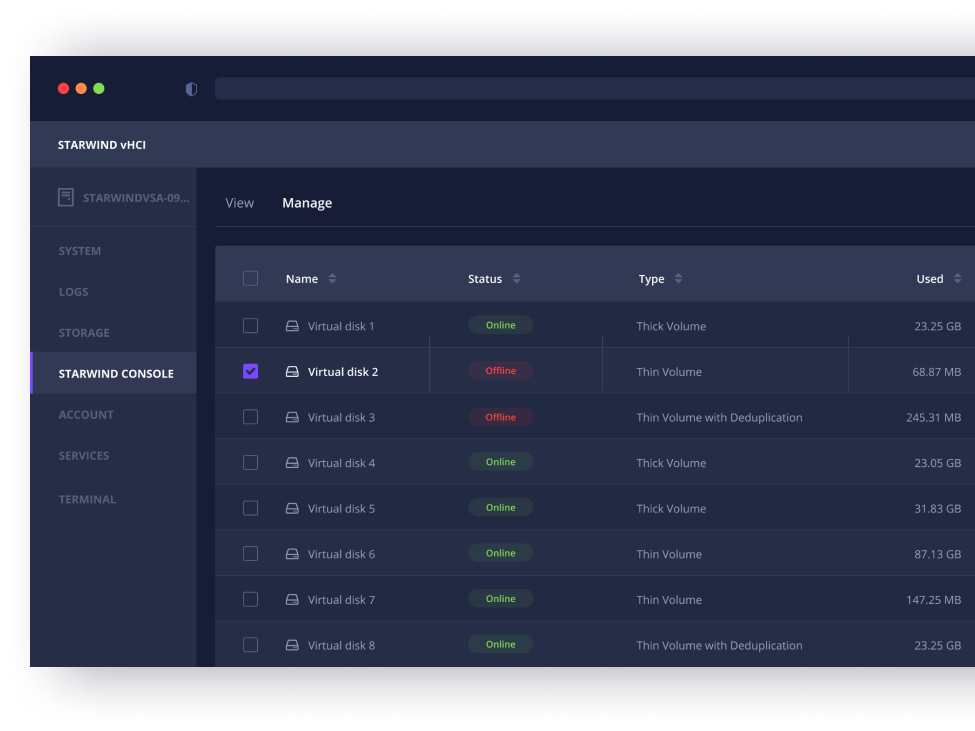Making the Most of Storage Technology with StarWind vHCI
Few IT departments have money to throw around right now. It’s a time when consolidation of the resources that an organization has is the most important goal to achieve. The demands of the business have not lessened at all – in many cases, the needs of its various stakeholders have grown. Economic slowdowns tend to invigorate the company’s decision-makers to double down, refine, and save costs while still acting with speed and agility.
There are some growing internal pressures, too, becoming more apparent. The broad acceptance of DevOps workflows means that developers expect parts of their toolkit, like infrastructure-as-code, to function without unreasonable strictures placed on them. Testing and QA processes still need resources too, and in limited resource environments, there’s no give-and-take. Who wants to scale back production systems at a time when fierce competition and reliance on CX standards are incredibly important?
For companies with very deep pockets, hyperconvergent technologies have always been able to make the most of limited resources in private data centers – a “problem” many IT professionals would be happy to have. For the rest of us, being caught between increasing demands on infrastructure and a lack of capital budget is a much tougher call.
There are a couple of options for companies looking to maximize existing storage investments. Either staff can be dedicated, pretty much full-time, to managing allocations of storage resources to the competing parts of the business. Or, they can deploy a new virtual HCI appliance from StarWind, the vHCI storage abstraction and management platform.

Source: StarWind
The abstraction of data storage facilities means that the IT function can assign resources dynamically wherever and whenever they might be required, using various protocols: iSCSI, NFS, Samba, and so on. Via a single VM dashboard, resources become available quickly and with practically no overhead in throughput or latency.
There are several significant advantages for both the organization’s strategists and the IT department:
The business’s investments to date in storage technologies are granted a new lease of life, becoming a pliable layer of available storage that can be assigned dynamically, either by automated scripts or manually via trained personnel. What’s also available is the full installation and management service from StarWind itself: effectively, any company can capitalize on its resources and simultaneously outsource storage provision management and monitoring 24/7.
In-house staff can see what resources are available, use-levels, speed, latency, and other key metrics to deliver a better service to the organization. Previously ring-fenced drives or arrays become a company-wide asset that can be delivered in whole or part, according to need. This capability may have been theoretically present already, but the administration overhead would have been intense. With the StarWind vHCI virtual device, responding to the demands of different parts of the company becomes simple and centralized, or fully (or partially) outsourced to infrastructure experts at StarWind.
As an organization’s storage resources grow over time, there is a natural tendency for investment into projects, applications and services that, at the time, brought significant value to the business. The ability to get further ROI on these investments by dynamically using every last byte right where it’s needed is a valuable commodity at a time when economic outlooks aren’t good.
Compounding the problem of mismatched historical, present and future needs is the common misapplication of resources because of differences in perceptions of need. Put informally, projects championed by internal stakeholders who can shout loudest (!) tend to get better provisioned. Virtualizing resources like storage can take all available resources and put them to the best use for the organization’s larger strategic goals. The ease of administration makes presenting resources to services and network segments as and when required simple, and removes any artificial (or technological) barriers between what’s available and what is needed.
In better times when IT budgets can grow again, we suspect that technologies like hyperconvergence in smaller businesses will be recognized as the strategic enablers they are. An investment now in vHCI makes sense in the current climate but will also pave the way for IT strategy in years to come. The cost of cloud storage (often the go-to solution when drives start to get full) is not falling at present, and nor is it likely to. Organizations need to consider what existing investments they have already made to realize the best value from their existing storage capabilities, and virtual HCI is the fast way to that goal.
To learn more about StarWind’s vHCI device and the different levels of support and monitoring available to those wishing to outsource storage management, reach out to a StarWind representative. Teams can also consult the vHCI knowledge base and see recommended drive configurations and minimum system requirements.









